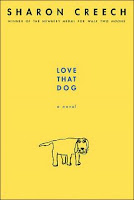Ken Dyer, a former student from the University of Calgary's teacher preparation program, teaches English to university students in China. He continues his ruminations on teaching English in a foreign country. In this blog, we learn about how he gets to know his students and how this impacts his teaching.
I am often asked how well I know my students; do I know all of their English or Chinese names? The honest answer is, I don’t get to know them on a personal level very well. In my own defense, I usually teach 200-250 students per semester across six classes, and I’m terrible at remembering names! I do remember faces quite well and can greet students from many years ago, but without attaching a name to that greeting.
I know some teachers make seating plans and demand students stay in the same seats all semester long. Because I teach at a university I don’t feel the need for such strict rules when dealing with young adults. In addition, my students want a “Western” experience not the stringent kind of teacher they have grown up with. Imagine if your university teacher had told you to sit in the same seat for the semester – you would think they were nuts! Also, because seats are bolted down, a tardy student would have to ask others to move to get to their assigned seat, which seems too silly and inconvenient to me.
Though I don’t get to know my students personally I do get to know their English level to a high degree. I do this by walking around the class during listening activities to see how the students are doing and to see which questions give them the most trouble. This is very valuable when discussing the answers to the questions and explaining what went wrong or what skills are needed to catch the right answers. Many of my students have commented that I don’t stand or sit in one position for long. Maybe this is a result of teaching elementary kids or maybe I am just a bit hyper!
When there are speaking activities, I listen to each group or pair of students to see how the discussion is coming along, what words are misunderstood and if any interesting points coming out. After this, we will have a brief discussion about problem areas or any unusual or tangential ideas that came up, At times this can lead to a whole new topical direction.
As I stated in the last blog, I make my own class booklets so the units are relatively set for the whole semester. This has both benefits and drawbacks. On the plus side, students can look ahead and are encouraged to go through the lesson to review vocabulary leaving class time to learn new words. This also assists me in preparing my lessons and having the whole semester planned out in advance. On the negative side, it is not as flexible as I might want and we are forced to follow a set path, to a certain degree. However, if something goes awry or some new topic or concerns arise, I can easily deviate from the booklet.
You may recall I mentioned the term ‘organic’ in a previous blog. The most important thing I learned when teaching children was organic teaching You have to get a sense of where your students are, what they understand, what mis-steps, on my part or theirs, have taken place, and what pace to teach at. Even though you have a curriculum to follow, or I have my set lessons to go through, if the majority of the students aren’t right there with you, then you can’t go further. You have to stop, go back a step or two, correct the problem or clarify the situation and move ahead in a slower more step-wise manner, so that you can be sure the concept, task or project is truly understood.
So I both modify my classes as they unfold, and also make notes about changes and modifications for next year. Sometimes I come up with new topics of tactics from side discussions or overheard discussions. As I mentioned in my last blog, I take feedback from the ‘teacher’s report card’ into consideration and make adjustments for next year over the summer. So there is some flexibility at a micro level - in the classroom - as well as at the macro level, in creating whole new lesson plans or revising old ones.






























